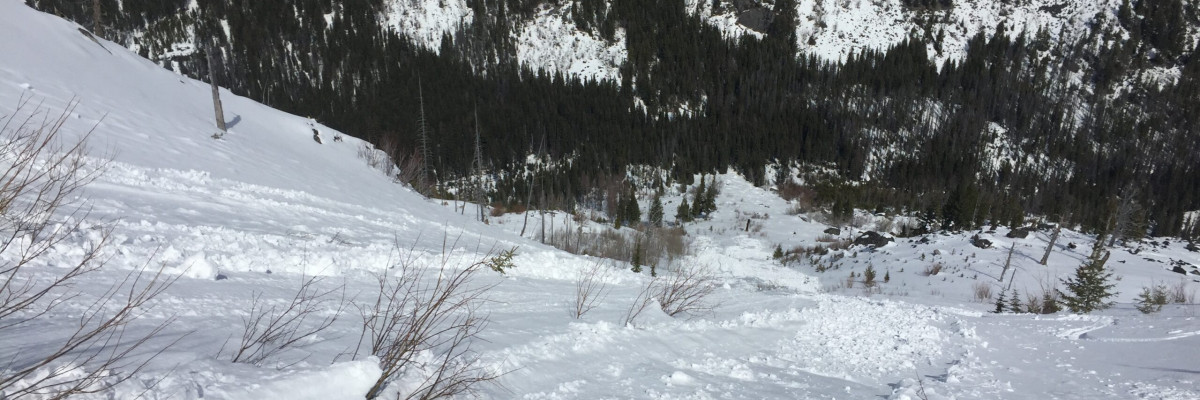The avalanche danger below 7,000 feet is moderate. Rain and warm temperatures have increased wet avalanche activity at mid to low elevations. At higher elevations, the avalanche danger is low trending towards moderate later in the day. Carefully assess routes and terrain in the backcountry today.
Good morning, this is Logan King with the West Central Montana Avalanche Center’s avalanche advisory for Thursday, April 4th, 2019. This danger rating does not apply to operating ski areas, expires at midnight tonight and is the sole responsibility of the U.S. Forest Service.
Weather and Snowpack
Temperatures at snotels never dropped below freezing for the last two nights. As of 5 am mountain temperatures range from 32 to 36 degrees Fahrenheit. Winds continue to be calm to light out of the Southwest across the forecast area. Snotels have picked up between 0.1 and 0.4 inches of SWE. Most of the water added to the snowpack yesterday fell as rain and rain lines were observed as high as 7,000 feet.
Consecutive nights without freezing temperatures and rain falling on snow will increase the avalanche danger today. Free water added to the snowpack at mid and low elevations is decreasing the strength of the snowpack. Expect to see loose wet activity transitioning towards wet slabs and formation of new glide cracks or full-blown glide avalanches primarily between 4,500 and 7,000 feet. The instability created by water that has been added to the snowpack is not always obvious and the only indications of weakening snow are natural failures and glide cracks. Don’t commit to avalanche terrain if you are unsure if the conditions are primed for wet failures as they are hard to predict and dangerous. Avoid traveling near or under cornices today especially later in the day because the lack of freezing temperatures have significantly weakened them. Remember that cornices tend to fail further back than expected so give them a wide berth.
Near 7,000 feet most locations initially received snow that transitioned to rain, but higher up wet snow was accumulating. Snow totals are small, but the high SWEs are adding a good load to the snowpack. This layer will need a day to bond to crusts on solar aspects and may be the catalyst needed to activate the deep persistent weak layers on cooler aspects. Although still unlikely be aware that large dry avalanches can be triggered from start zones or rocky areas above 7,000 feet on northern aspects.
Avalanche and Weather Outlook
Warm and mostly cloudy conditions are forecasted for today. A round of light precipitation looks to develop by Friday morning with rain lines approaching 7,000 feet again. Saturday will bring a more impactful storm for the weekend. Overall the avalanche danger will slowly trend upwards over the next few days with more rain and snow.
If you get out into the backcountry, please share your observations on our public observation page.
Ski and ride safe.
























